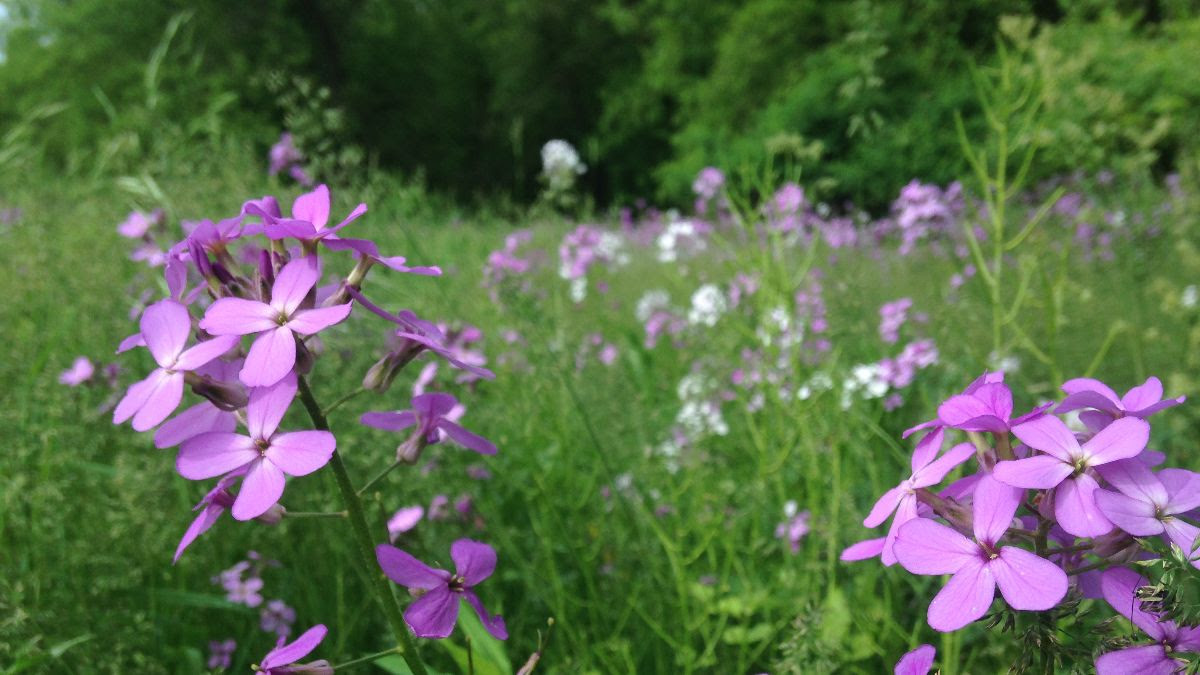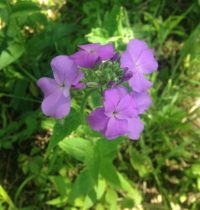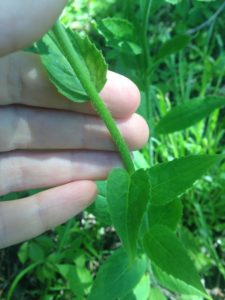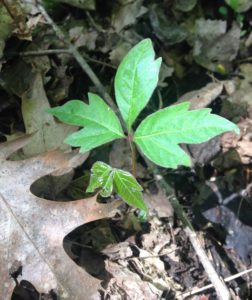Michigan Audubon needs your help once again in pulling invasive species on your own! We recently described how you could do a DIY garlic mustard pull, helping to remove a harmful non-native plant from the woods and meadow edges at Michigan Audubon sanctuaries.
We have another invasive plant species to learn how to identify and pull – dame’s rocket (Hesperis matronalis)! Like garlic mustard, dame’s rocket is an aggressive invasive species that spreads easily on many sites. A single dame’s rocket plant can release 20,000 seeds – hence why it spreads so rapidly! Unfortunately, this can lead to the replacement of native plants, disrupting the local ecosystem and displacing native insects that depend on native plants. Insects are a critical food source for the birds we so love, especially during this time of year when they are feeding their young in the nest.
How to identify dame’s rocket:
Dame’s rocket has simple leaves that are long and lance-shaped, and feel downy. The stem also has rough hairs on it. Its flowers are purple, white, or pink in color and have four petals.
Dame’s rocket flowers are somewhat similar in appearance to native Phlox species. The two can be distinguished easily: dame’s rocket has four petals per flower and alternately arranged leaves, while phloxes have five petals per flower and opposite leaves.
What you can do:
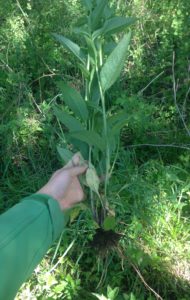
Dame’s rocket may send up several shoots from one set of roots. Grasp near the bottom of the stem and gently pull out from the ground.
Now that you know how to identify dame’s rocket and, hopefully, also garlic mustard – what is the next step? Dame’s rocket can be pulled by hand; please pull as close to the ground as possible to get as much of the root as possible – this works great if the soil is moist. Once you have pulled it, place the plant in a bag for safe disposal. Dame’s rocket flowers begin blooming in May and June and are very easy to spot. Now is the time to get out there and do some pulling!
Please bring your own bag to Michigan Audubon sanctuaries (a heavy-duty plastic trash bag works best), and carry out the bagged plants. Dame’s rocket and garlic mustard should be disposed of within plastic bags in the landfill, as both can set seed and reproduce if placed into compost piles or left on the ground after being pulled.
Want to learn more?
Check out the invasive species training modules from the Midwest Invasive Species Information Network! Dame’s rocket module link here: https://www.misin.msu.edu/train/species/DamesRocket/story_html5.html
Public safety notice!
Please be sure to follow all COVID-19 precautionary measures, including wearing masks in public, only traveling to sanctuaries that are near home for you, traveling and walking only with people who are in your household group, and maintaining a 6-foot distance between you and other people you encounter at the sanctuaries.
Also, it’s that time of year when ticks are becoming active, and poison ivy is sending out new leaves. It’s a good idea to do a tick check after being outdoors!
For questions about pulling invasive plants or accessing Michigan Audubon sanctuaries, contact Conservation Program Coordinator Linnea Rowse at lrowse@michiganaudubon.org.
Wednesday Workdays at Capital City Bird Sanctuary
If you prefer pulling invasive species in the company of other volunteers and with the help of Michigan Audubon staff, check out a Wednesday Workday at CCBS. This weekly event runs from 9 a.m. to 12 p.m. and is an excellent way to gain confidence in conservation activities and connect with other nature enthusiasts. You can find more information about workdays and other Michigan Audubon events on our calendar.
~ By Linnea Rowse
Michigan Audubon Conservation Program Coordinator

